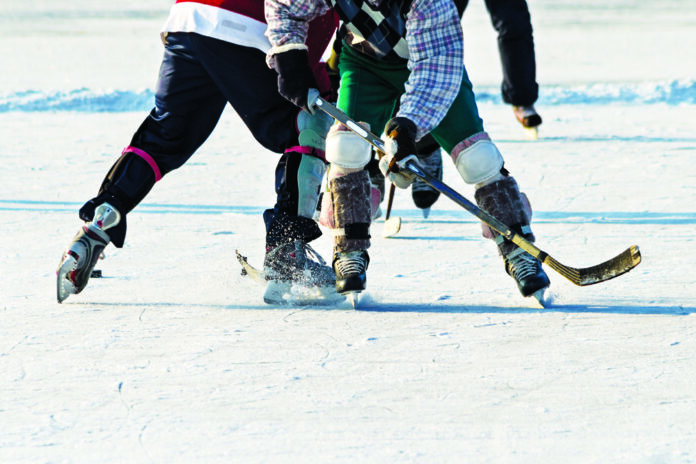
On the farm, a frozen lake usually means a pick-up game of pond hockey. There are no matching jerseys but everyone knows who is on their team.
As the game continues, the edge of the lake is littered with discarded layers of clothing no longer needed. It is brother against brother, neighbor against neighbor, all hoping to score the game-ending goal.
The perfect ice is smooth, but more often than not our pond ice has several ridges and rough patches. In comparison to Lake Erie, our pond is a mere puddle, a drip between cornfields.
Frozen Ohio tundra
Every winter, I hope to make the trek north to see the icy standstill created by Mother Nature on Lake Erie. The line between the frozen lake and snow-covered landscape blends together so well that Ohio looks like the arctic tundra.
Lake Erie is the shallowest of the Great Lakes, and it also has the smallest volume of water. Due to these factors, it stays the warmest in the summer and is the first to freeze in the winter.
It has been 26 years since Lake Erie completely froze over in February of 1996. Some climatologists are predicting that this might be another year the lake completely freezes over but of course, there is a wide margin of error.
Winter on Lake Erie is the season of stillness with the only movement coming from the wind and a few ambitious fishermen huddled around a hole in the ice, hoping to lure a fish out of the deep water.
The warm waves of summer have nothing in common with the frozen white blanket draped across the land. The edge is not flat and smooth, but rough ridges where the lake meets the shore.
When I look at our frozen pond, I see opportunities for recreation and fun. However, Lake Erie is intimidating and foreboding. It can be dangerous; every year people are rescued from ice floes.
Ice producer
Despite the lurking danger, during a long stretch of history, the frozen water not only meant recreation, but it was also a lucrative business. In the 1880s and 1890s, Sandusky was the largest producer of ice in the U.S. west of the Hudson River.
Local men would tackle the arduous task of harvesting ice. For a 10-hour workday, they earned $2. The ice on the lake had to be 8 inches thick before workers could go out with horse-drawn scrapers to clear off snow and ice.
The crews harvested as they went using horses to help create a checkerboard on the ice. Then the sections of ice would have to be cut into ice cakes and floated in the channel of water with additional workers with poles guiding it back to shore. About 400,000 tons of ice were harvested out of Lake Erie every winter by local Sandusky workers.
The ice industry complemented the commercial fishing industry. For each barrel of fish, 10 pounds of ice was needed. The ice was stored in ice houses along the shore. Sawdust was used as insulation to help keep the ice frozen during warmer months.
Many homes during this time had an “ice box” used to keep perishable items cool. It was the precursor to today’s refrigerator. The wooden boxes were lined with zinc or lead. A horse-drawn ice wagon meant the arrival of the iceman who delivered blocks of ice to towns and cities.
A way to keep ice year-round also meant cold treats like ice cream and sorbet in the summer months. I am not one to talk about ice cream in the winter. It’s strictly a seasonal treat in my opinion. My husband disagrees and looks at it as a winter staple. I’m sure he would have been motivated to cut ice out of a frozen lake just for dessert purposes.
Times have changed and getting ice is no longer a community event. Instead of gathering together for harvesting ice, we gather as neighbors to remove ice and snow, keeping each other warm during winter storms.
As I sip hot chocolate, and my family scoops their ice cream, we are thankful for our heritage and the examples set by hard-working men and women who together carved out the American dream.












